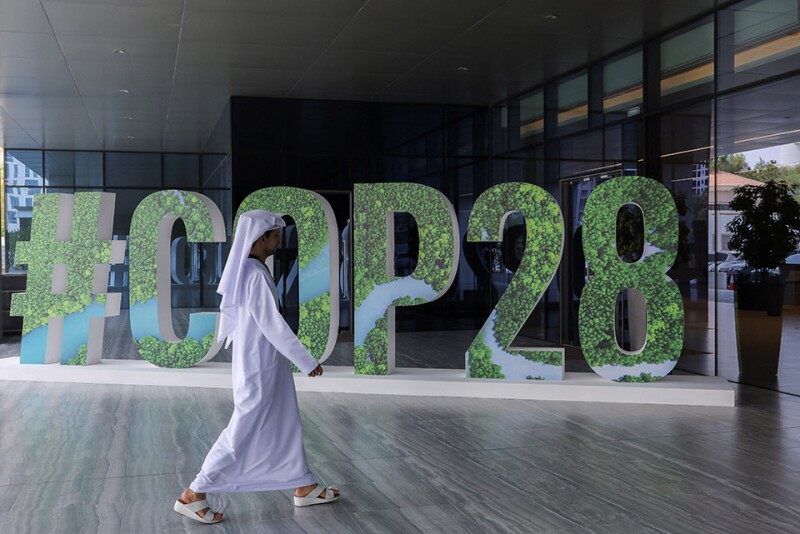
There is something wonderfully inconsistent about hearing energy companies make promises about equipping fuel stations with solar panels and electric vehicle charging stations in a country where the public electricity supplier cannot guarantee more than four hours of power a day.
And yet in the luxury Le Royal Hotel in Dbayeh, innovation and tech were central themes during the opening speeches of Beirut Energy Week.
Less time was dedicated to addressing the fact that locals rely on highly polluting local generators.
This inconsistency demonstrates how investors and corporates remain intent on prioritizing nice shiny capital-growth opportunities in the climate-tech space, even when basic energy-efficiency needs – which would be the logical first step – have not been met.
Banks need to avoid this mistake.
New money
The energy sector as a whole has not been receiving as much attention from private equity investors as it has done in the past, and that has left room for debt lenders to move in.
In the first half of 2023, venture-capital funding to climate tech was down 40%, according to data from Climate Tech VC, which confirmed that the asset class isn’t immune to the broader fluctuations of the VC space.
Debt financing traditionally lags behind equity in the climate-tech funding ecosystem since these companies don’t typically access debt in their early years.
Recently however, some lenders have been making big statements about climate tech.
HSBC just announced plans to extend $1 billion of debt financing to early-stage climate-tech companies, a mere six months after having acquired Silicon Valley Bank’s UK arm and its climate-tech portfolio, now known as HSBC Innovation Banking.
Financiers should stick to the solutions that are already available and deployable at competitive prices
Back in May, it was MUFG that launched its Marunouchi Climate Tech Growth Fund, a private equity vehicle with a target of $800 million to $1 billion.
While this might not be debt funding, you can imagine that the startup in this portfolio will then be in a good position to integrate MUFG’s lending books afterwards.
The VC slump also leaves room for M&A and advisory activity to pick up, according to boutique climate-tech investment bank DAI Magister.
“The select few climate-tech companies which have already achieved scale already stand out, not just in size but also strategic attractiveness,” the bank notes in a recent market outlook report.
“We expect more M&A activity to begin substituting for now more-challenging VC and growth capital, and it’s a different way for the industry to achieve its overall, critical objectives.”
But at the macro level, the outlook has declined for emerging climate innovations to contribute to emissions reductions in the short term. And if rapid decarbonization is the goal, financiers should stick to the solutions that are already available and deployable at competitive prices, instead of chasing the next climate unicorn.
The big picture
In its 2023 updated net zero roadmap, the International Energy Agency highlights the smaller part emerging technologies will play in limiting the global temperature rise to 1.5 degrees.
“In our 2021 report, the share of emissions reductions in 2050 from technologies under development was almost half: that figure has now fallen to around 35% in our updated NZE scenario,” the IEA states.
The roadmap adds that the part played by hydrogen, hydrogen-based fuels and carbon capture, utilization and storage (CCUS) in decarbonising heavy industry and transport is also smaller than in the 2021 report.
In writing this, the IEA is readjusting its outlook to factor in the impact of the progress that has been made in developing and deploying renewable energy technologies since 2021.
And given that CO2 emissions in the energy sector reached an all-time high last year, why not continue on this trajectory and deploy as much of the reliable and cost-competitive technology solutions now?
To a certain extent, this is already happening, especially in developed markets. According to the Agency’s June Renewable Energy Market Update, global renewable capacity is set to rise by 107 gigawatts to over 440GW in 2023.
But this renewable power capacity is concentrated in Europe, the US and China. In emerging markets, investments into power grids need to come before renewable energy can be pumped into the system.
Of course, no one is advocating for the climate-tech investment tap to be turned off.

Ahead of COP28 in Dubai, the UAE's deputy chief of mission to the UK, Khalid Al Qasimi, was extolling green innovation at the London Climate Technology Show in late September.
His words set the tone for the annual climate conference: A focus on climate tech in sectors including energy, mobility and construction are essential to meet both net-zero objectives and secure economic growth.
Once again, topics such as CCUS technologies, sustainable aviation fuel and green hydrogen are likely to be high on the agenda.
The Emirati presidency’s aim of steering attention towards technology and innovation makes sense given the UAE’s strategic plan to become a hub for climate technologies in the region.
But the focus on climate tech should not come at the expense of the necessary investment in basic but less glamorous energy projects in the emerging markets.
An obvious point to make here is that it is a lot easier for private-sector capital to be mobilised to finance emerging climate-tech companies than it is to refurbish clunky public-sector energy grids anywhere, let alone in often politically unstable countries.
But ultimately the financial champions in the race to net zero will be the ones able to deploy large-scale decarbonization technologies in as many markets as possible by 2030, and not the ones investing vast amounts of fresh capital into technologies that will mainly serve the offsetting interests of developed economies.
